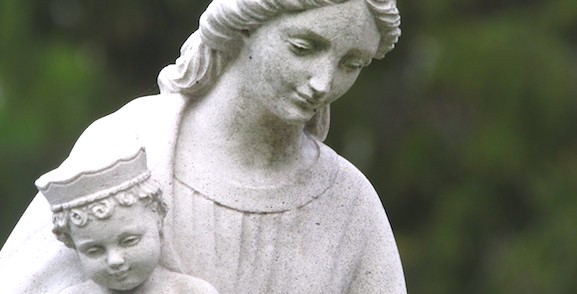
In June 1609, a boatman from Dinant, Belgium, bought a huge piece of oak measuring 8 feet in diameter for firewood. While cutting it into logs, a woodsman from Foy (a Belgian village) laid bare, in the heart of the huge trunk, a statue of the Madonna and Child.
The white stone statuette measured about 8 inches. They also discovered small white stones and a braid of woman's hair. Three iron bars closed the cavity that contained these various objects, proving that this was a niche where the Madonna had been honored in former times. The braid of hair was an ex-voto left as a token of gratitude. As the statuette was in in the middle of this enormous tree, it was discovered that it had been deposited there more than two centuries ago.
Six weeks after the discovery, the Baron of Celles, who was the Lord of the Manor, heard about its existence and had it placed in his own private chapel. From that moment, dazzling miracles occurred through her intercession and pilgrims, simple devotees of Our Lady, the sick and cripples of all kinds, flocked to the castle to see the statue. After a while the Baron, bothered by the continual crowds, had a special chapel built, dedicated to Our Lady of Foy.
This chapel was completed in 1618, and was built on the spot where the holy image was found.
Henry Arthur Scott
Our Lady of Foy, 1904.